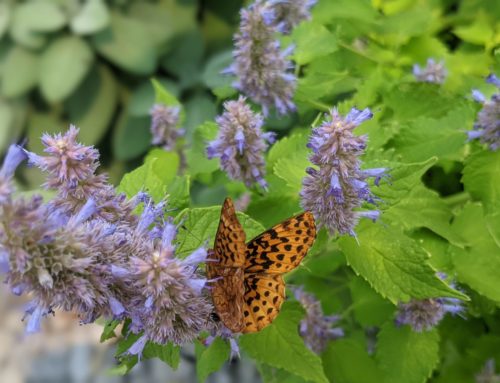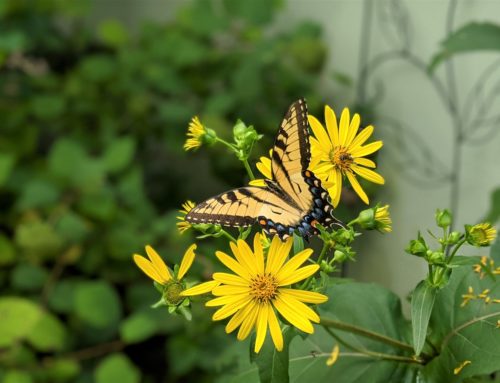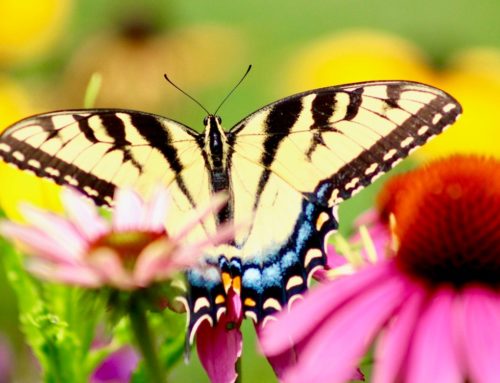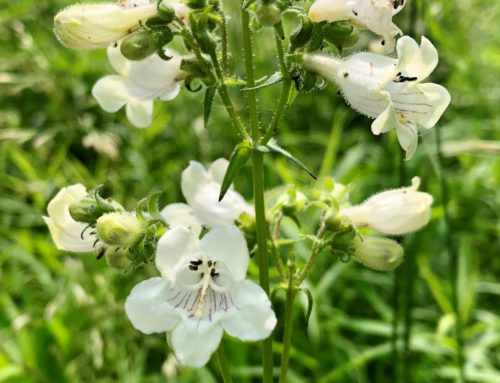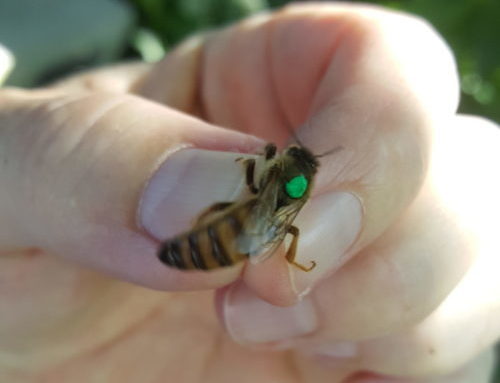Long before honey bees arrived in North America, over 4,400 different species of native bees were pollinating the indigenous vegetation. These bees are usually solitary creatures. They don’t live in hives, but instead build nests underground or use hollow stems or holes in trees. The only place native bees are absent is in high mountains. There are even 12 species of bees in the Arctic Circle. Despite spending nine months in a state of torpor under the tundra, the Arctic bumblebee, Bombus polaris, is very busy during the next three months incubating eggs and pollinating tundra wildflowers, louseworts and willow catkins. These plants in turn provide food for other animals such as moose and birds.
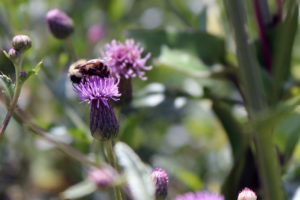
Not surprisingly, since honey bees aren’t native insects, they are not good pollinators of native plants. They don’t pollinate tomatoes, eggplants or native azaleas and do very poorly with other natives, such as pumpkins, blueberries and cranberries. Native bees pollinate 80% of flowering plants and 75% of fruits, nuts and vegetables in this country. In her lifetime, the southeastern blueberry bee pollinates enough flowers to produce 6,000 blueberries. The retail value of these berries is approximately $20. It doesn’t take much calculating to estimate the economic value these bees contribute to not only blueberry farmers, but other crop growers. Honey bees definitely have an important place in the economy, not only in the production of honey but in pollinating non-native crops such as almonds. The fact that honey bees can be transported to crops where and when they are needed also increases their value.
Some native bees are generalists, visiting different types of flowers. Other native bees specialize on specific plants or family of plants. For example, squash bees concentrate on cucurbits and they often build their nests under the plants they pollinate.
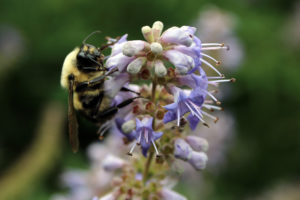
Unfortunately, like other pollinators, native bees are in decline and for many of the same reasons: habitat loss, climate change, parasites and disease, pesticides and invasive species. Some scientists think honey bees are contributing to the extinction of native bees. Honey bees can out-compete native bees and can extract huge amounts of pollen and nectar in every habitat they live. If there is an abundance of flowers, there is plenty of nectar for both honey bees and native bees. The problem occurs when there are not enough flowers to provide for the needs of both. Some scientists compare honey bees to other agricultural animals, such as cattle or sheep. As an agricultural business, honey bees have government agencies and corporations researching colony collapse disorder and other problems of honey bees. Who is looking out for the native bees?
In the Midwest, 50% of the native bees have disappeared in the last 100 years. Four species of bumblebees have declined 96% in the last 20 years. Much of this decline has been attributed to the use of neonicotinoid pesticides. These pesticides are used to pre-treat seeds to repel insects that attack the plant. This pesticide remains in the plant and bees pick it up in the pollen and nectar. The use of these pesticides has negatively impacted native bees. Studies have shown that native bee populations in treated fields were half the number of those in untreated fields. In 2013, neonicotinoid pesticides were used on 95% of corn and canola crops and the majority of fruits and vegetables.
Is there anything that the average person can do to help native bees? Fortunately, yes!
 Planting a garden with native flowering plants gives the native bees the pollen and nectar they need.
Planting a garden with native flowering plants gives the native bees the pollen and nectar they need. - Be sure to plant a variety of flowers with various flowering times so bees will have food throughout the growing season.
- Plant flowers in clumps rather than singly. This makes it easier for the bees to find and encourages them to stay longer.
- Allow lawns to grow longer and allow the clover to bloom.
- Native bees also need a place overwinter to lay their eggs. Leave some wild spaces. At the end of the growing season, leave the stalks and stems of spent flowers to remain.
- There are bee houses that you can make or purchase to give the bees a place to lay their eggs and overwinter.
- Don’t use chemical pesticides.
- Avoid buying plants and seeds which contain neonicotinoids.
Hopefully, as people become aware of the value of these pollinators, steps will be taken to protect them from the threats they are now facing.


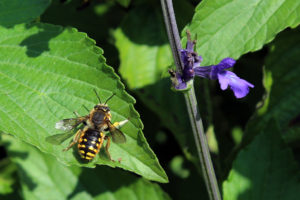 Planting a garden with native flowering plants gives the native bees the pollen and nectar they need.
Planting a garden with native flowering plants gives the native bees the pollen and nectar they need. 